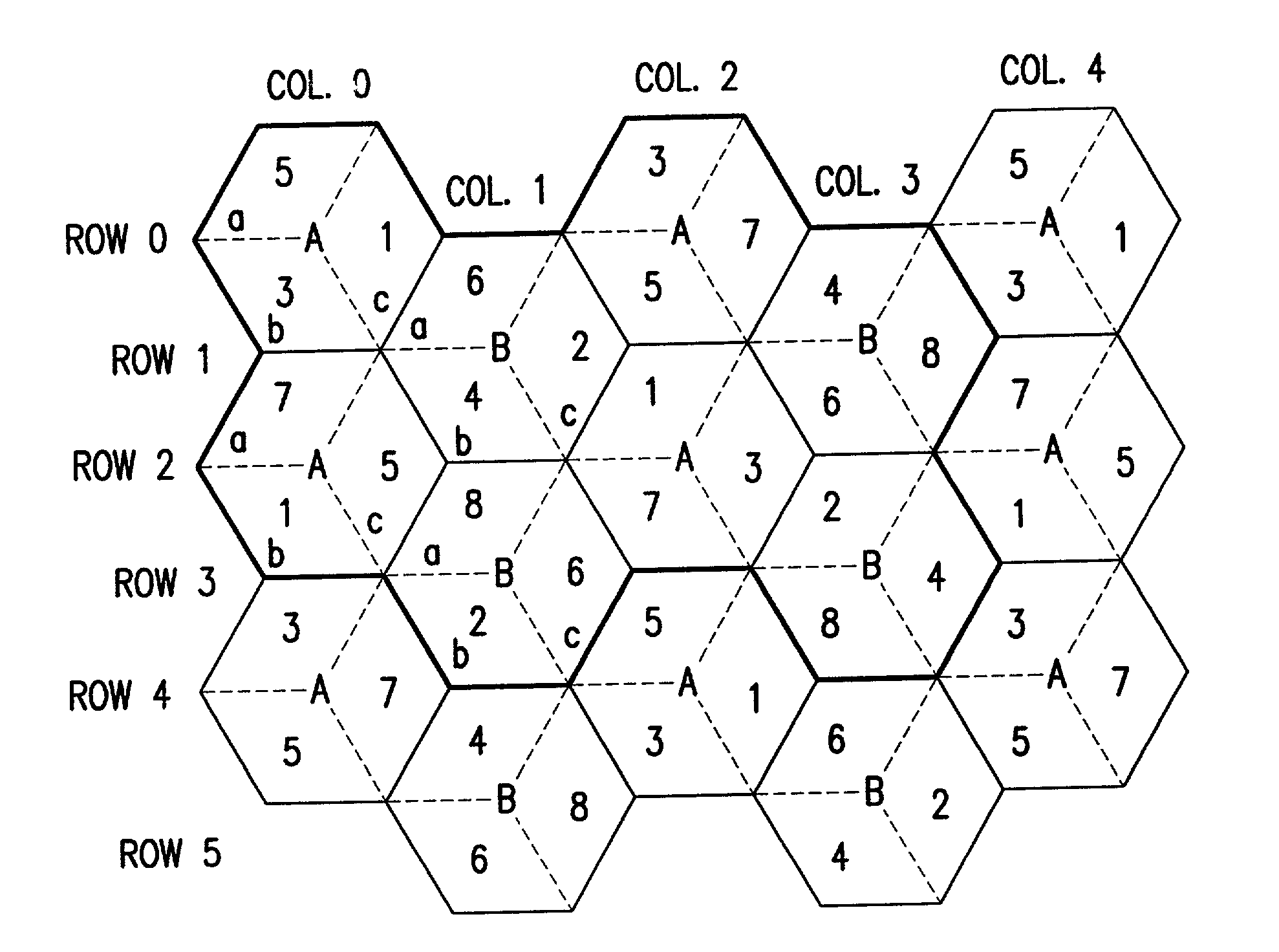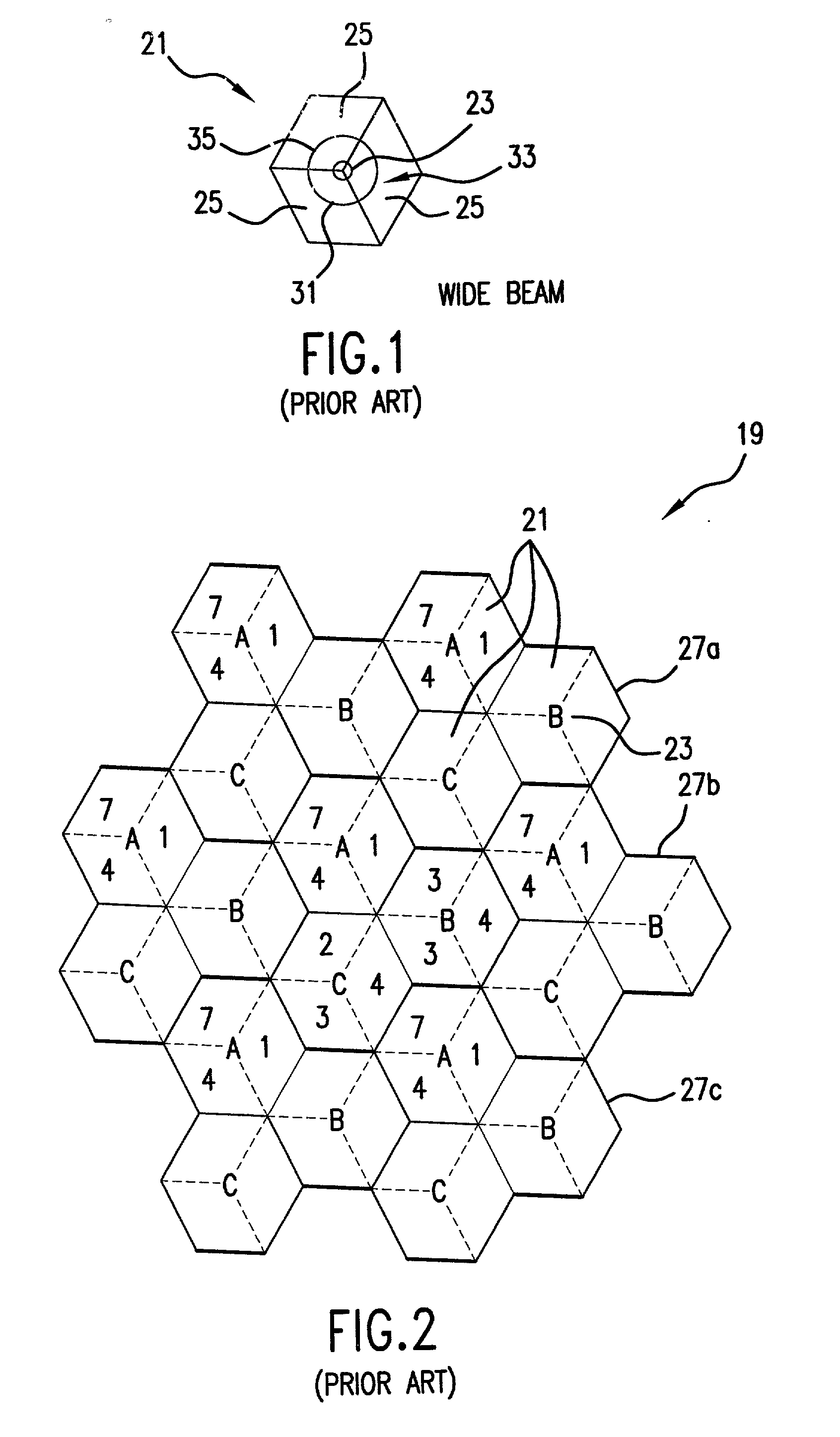Process to allocate channels in a sectorized and tiered cellular network
a cellular network and channel allocation technology, applied in the field of allocation/assignment of radio frequencies, can solve the problems of reducing the ability of cellular operators to provide reliable service with minimal channels, and affecting the quality of communications
- Summary
- Abstract
- Description
- Claims
- Application Information
AI Technical Summary
Problems solved by technology
Method used
Image
Examples
Embodiment Construction
[0028] The present invention is described below in terms of an exemplary embodiment of two trisectorized cell types for purposes of clarity and ease of explanation. The person having ordinary skill in the art will appreciate that the techniques and systems described herein can be applied to a number of sectorized cellular communications systems and are not intended to be limited to the described exemplary embodiments. For example, the techniques described may be applied to cellular systems with a greater number of sectors or cell types, or less number of cell types.
[0029] Referencing FIG. 3, a cellular system 19 has eighteen hexagonal wide beam cells arrayed in a grid of five columns (columns 0-4) and 7 rows (rows 0-6). Columns 0, 2, and 4 have four cells while columns 1 and 3 have three cells. Rows 0, 2, 4, and 6 have three cells. Rows 1, 3, and 5 have two cells. To index, or label the cells, the base stations central to the cells are designated BS.sub.i,j, with i=row and j=column,...
PUM
 Login to View More
Login to View More Abstract
Description
Claims
Application Information
 Login to View More
Login to View More - R&D
- Intellectual Property
- Life Sciences
- Materials
- Tech Scout
- Unparalleled Data Quality
- Higher Quality Content
- 60% Fewer Hallucinations
Browse by: Latest US Patents, China's latest patents, Technical Efficacy Thesaurus, Application Domain, Technology Topic, Popular Technical Reports.
© 2025 PatSnap. All rights reserved.Legal|Privacy policy|Modern Slavery Act Transparency Statement|Sitemap|About US| Contact US: help@patsnap.com



